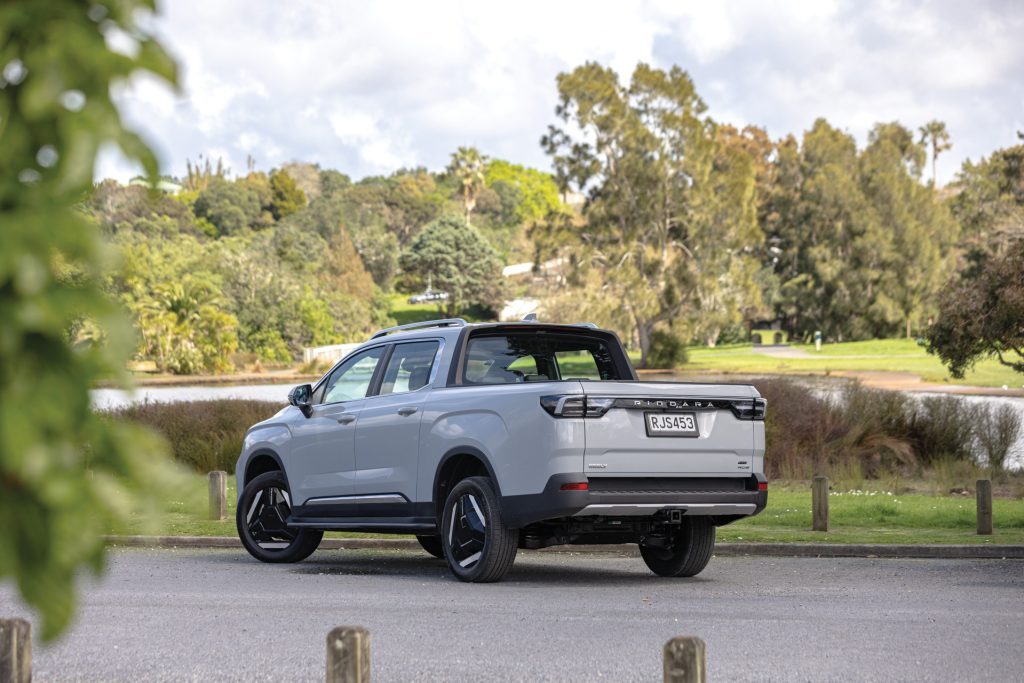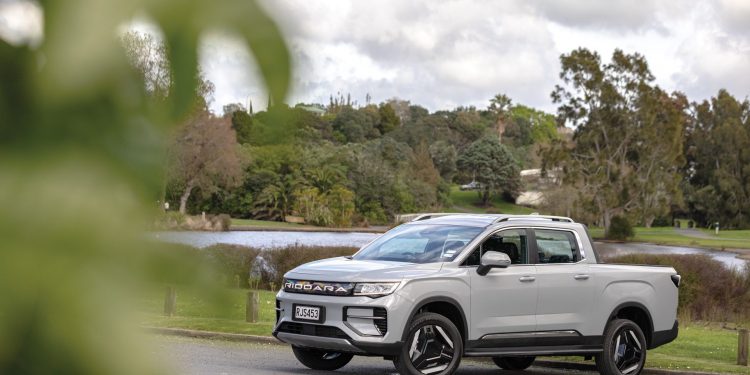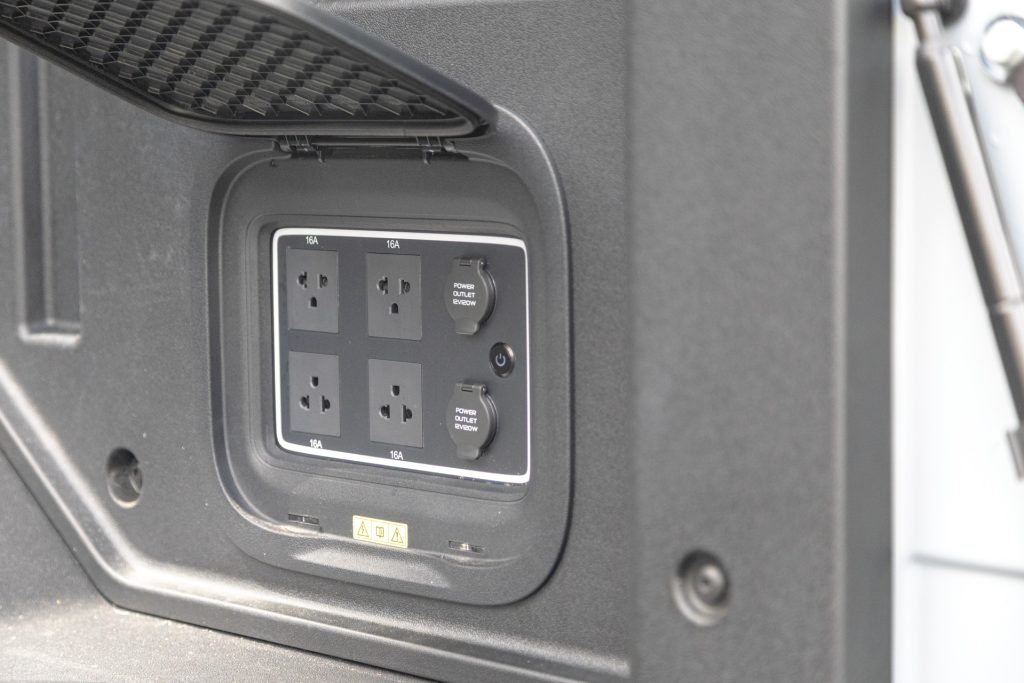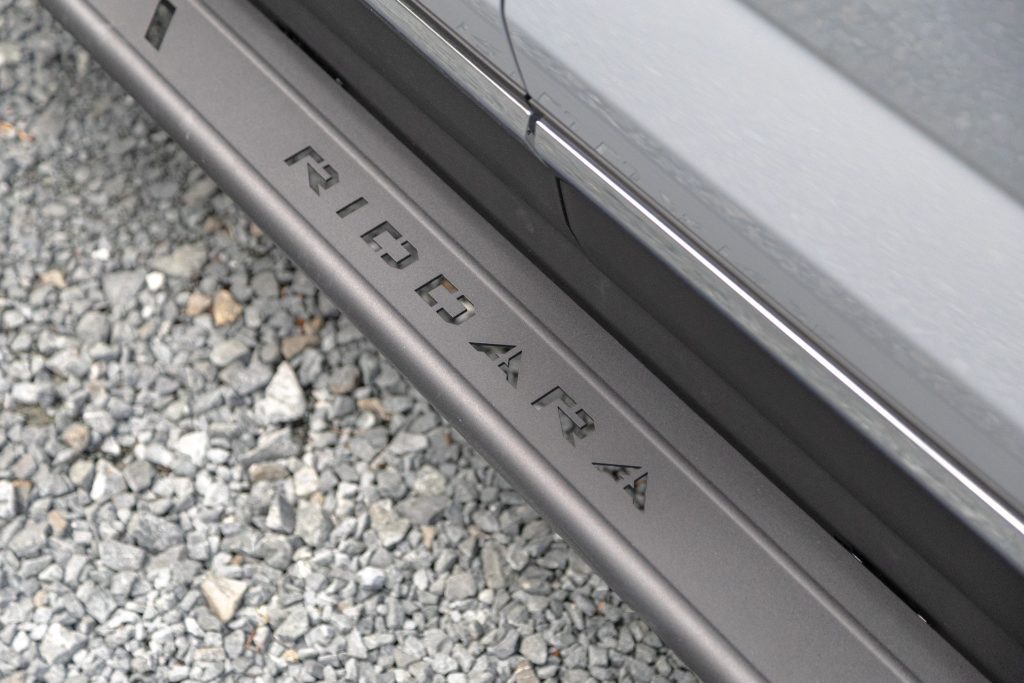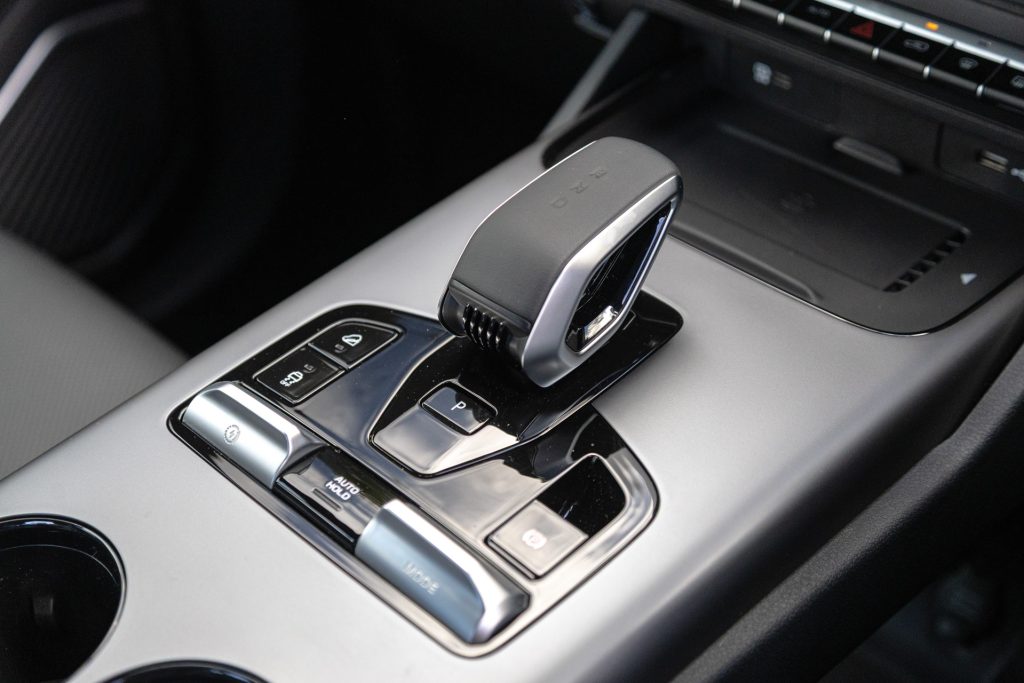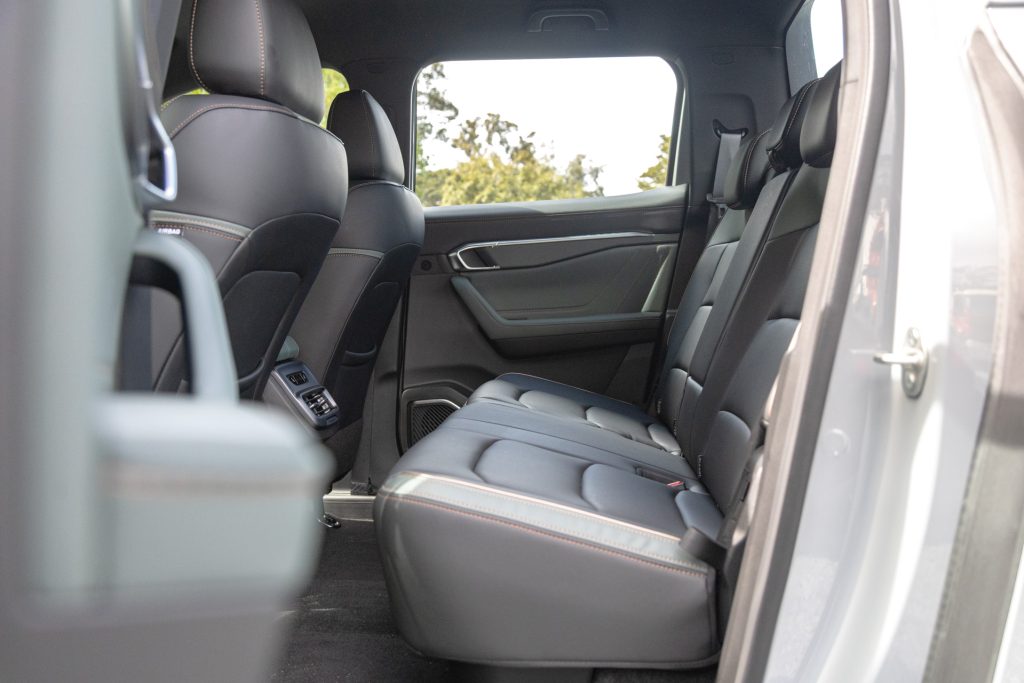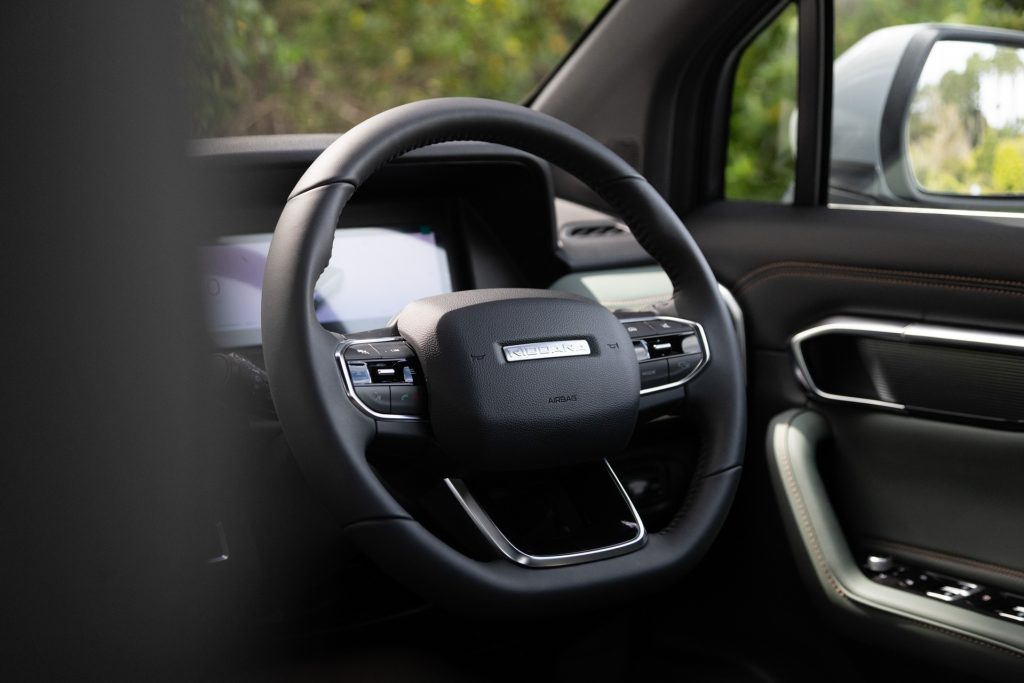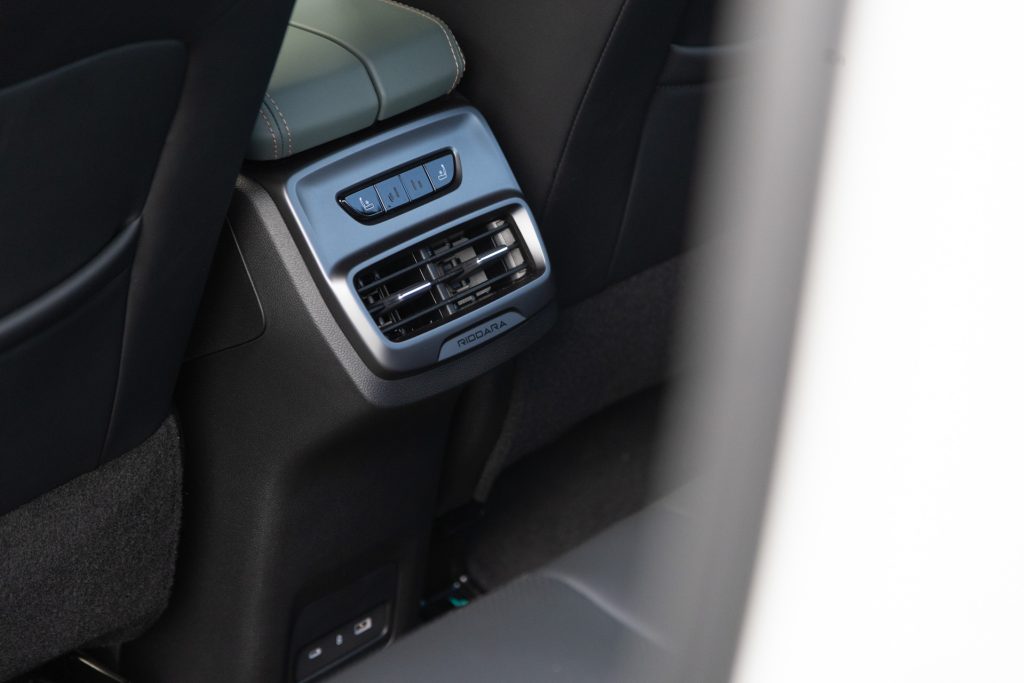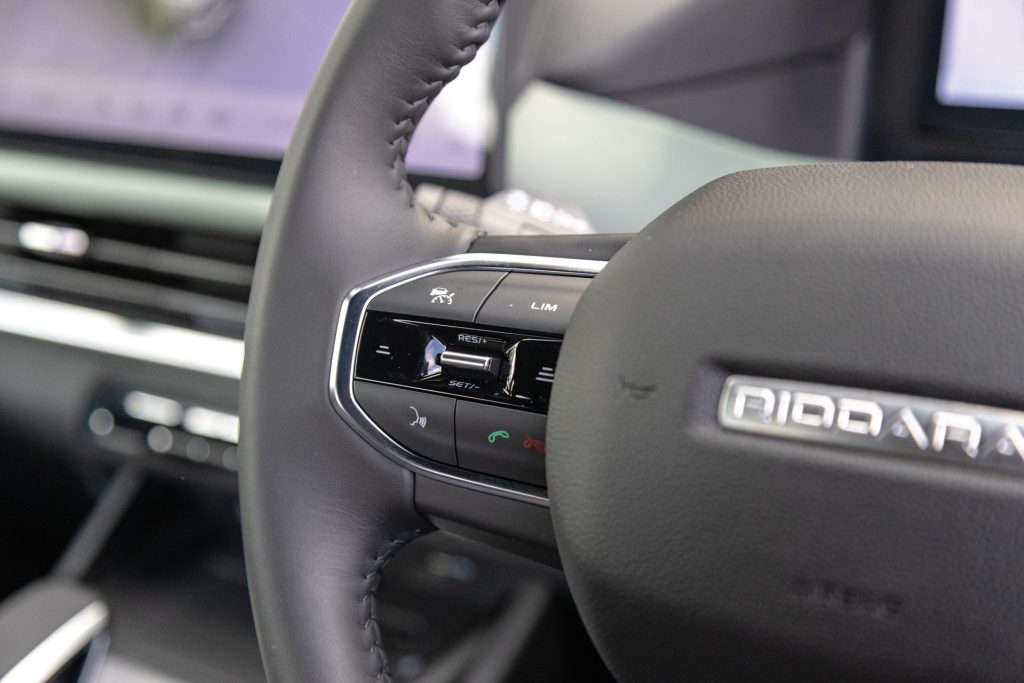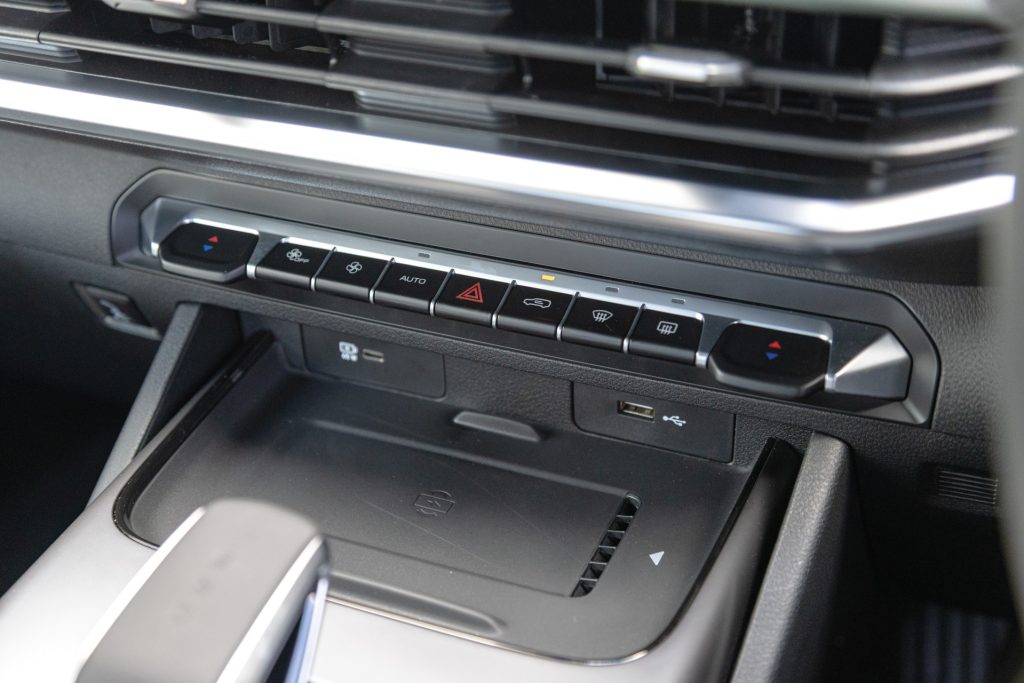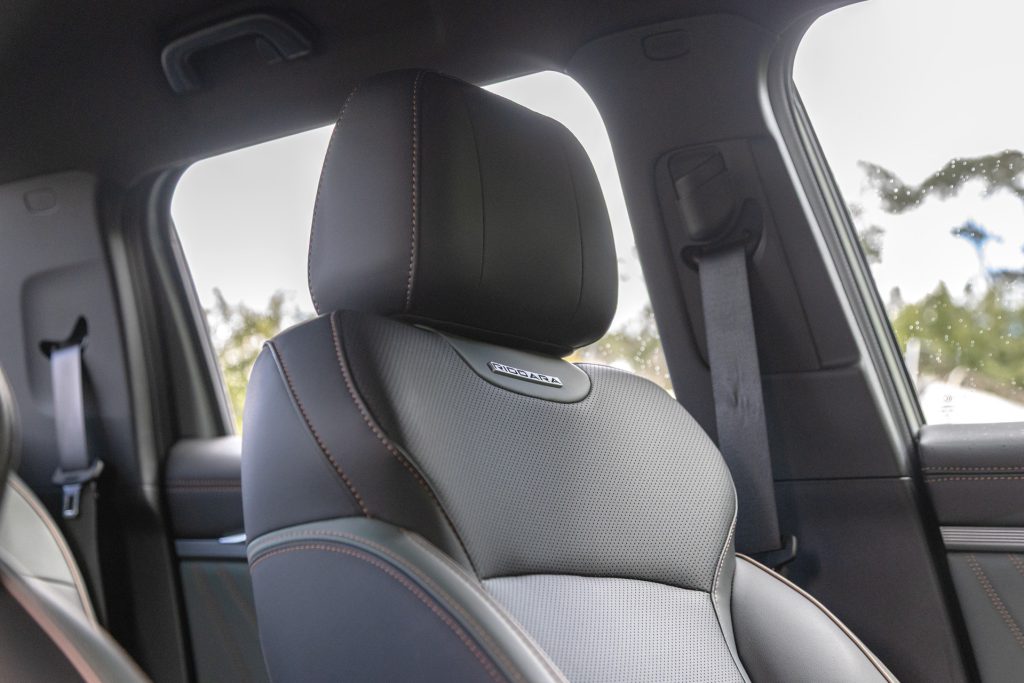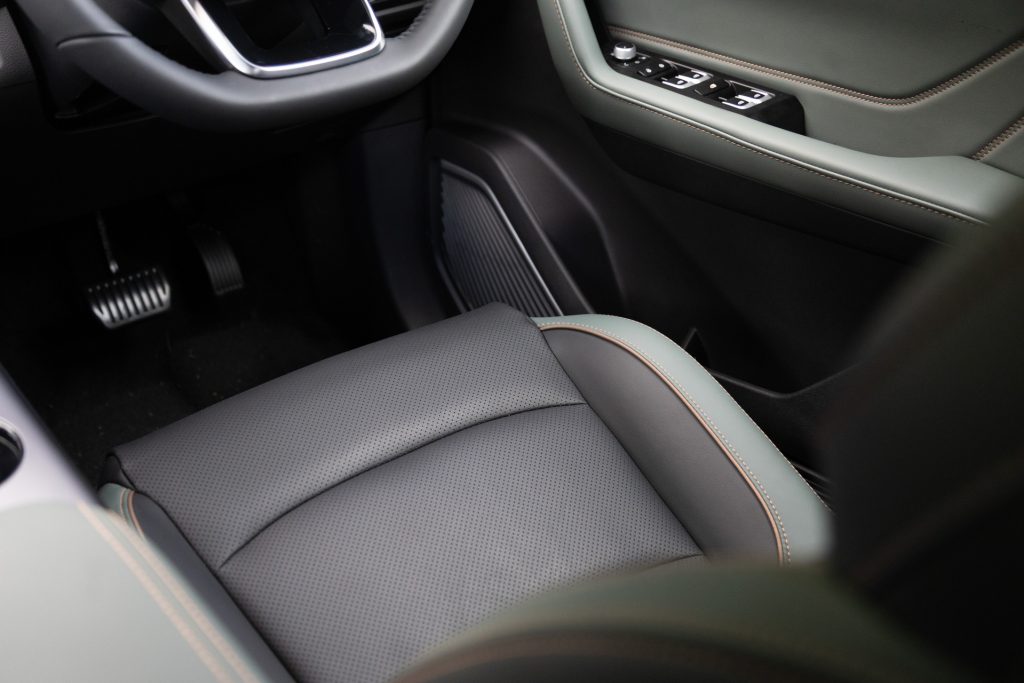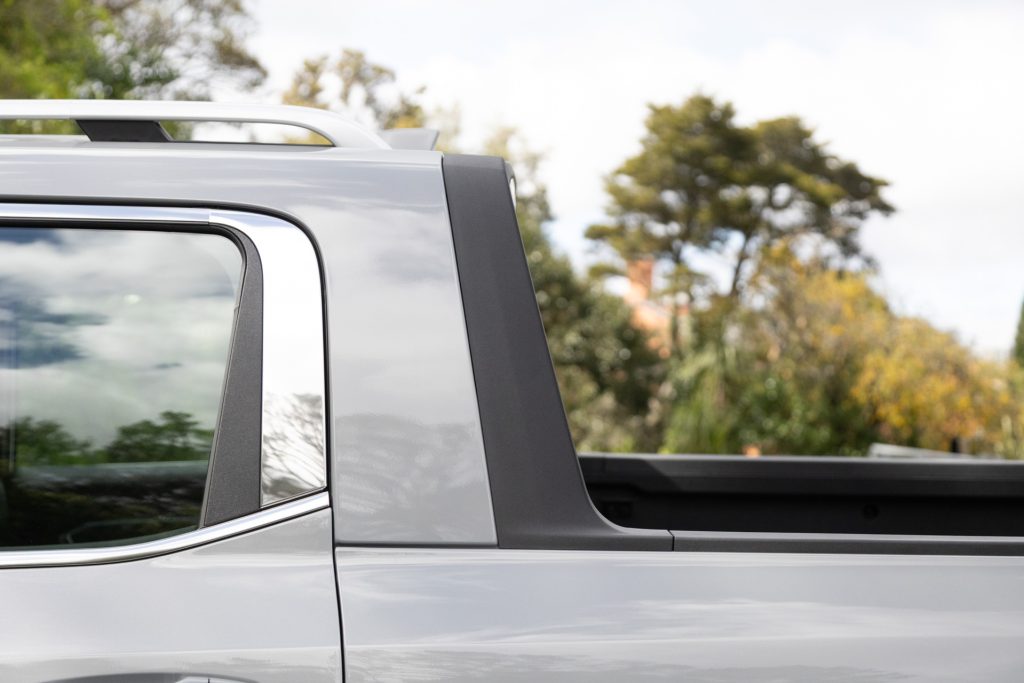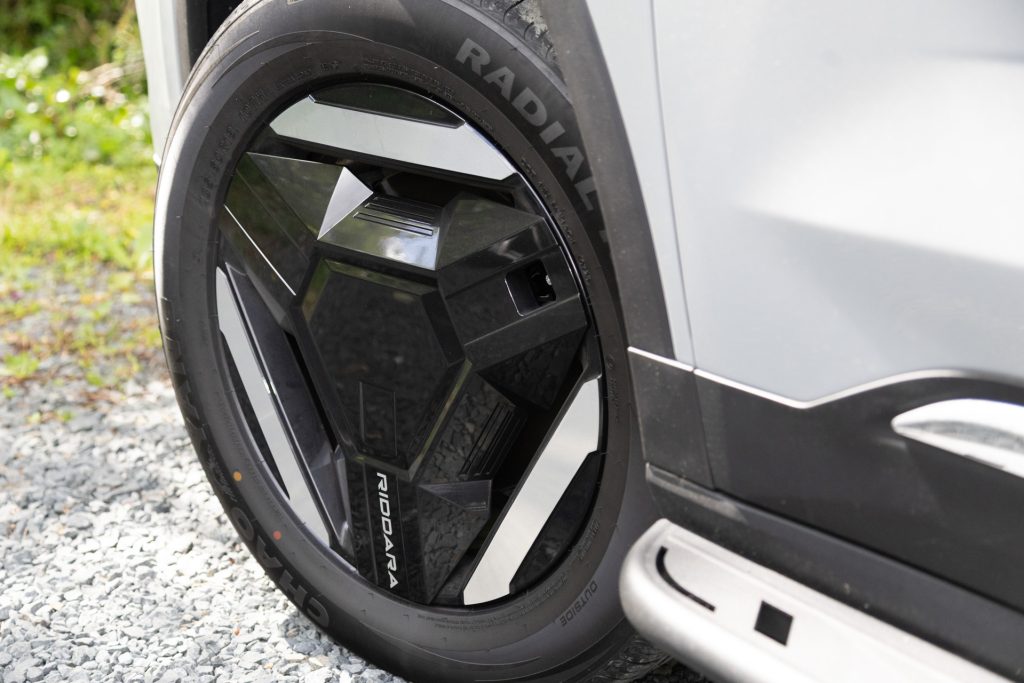2025 Riddara RD6 Review
Words: Richard Edwards | Photos: Alex Schultz
A new four-wheel drive fully-electric ute has landed in NZ. Is it the real deal though?
Can an electric ute really be a proper ute? Ever since Jacinda suggested they were imminently arriving – some time before they actually did – that’s been the pub-talk question: can a BEV still tow, carry, and clamber like a diesel? Until now, most brands have played it safe with plug-in hybrids such as BYD’s Shark 6
or Ford’s Ranger PHEV.
Geely has skipped the halfway step and landed a fully electric double-cab: the Riddara RD6 Pro. The name may sound new, but the company behind it certainly isn’t. Geely also builds Volvo, Polestar and Zeekr vehicles, and that shared DNA shows here. Under the skin sits Geely’s SEA (Sustainable Experience Architecture) platform, a passenger-car structure rather than a ladder chassis, so the RD6 isn’t a truck wearing car clothes; it’s a car that thinks it’s a truck. That turns out to be a very good thing.
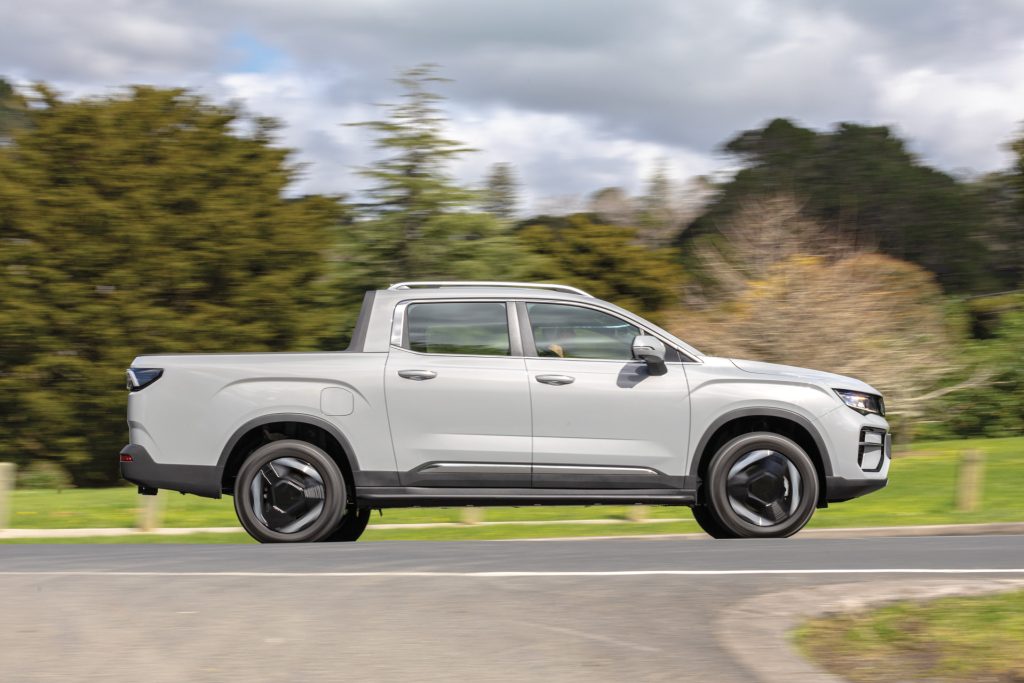
Looks that grow on you
Pictures don’t do the proportions justice. At 5.26 metres long and 1.9 metres wide, the Riddara is every bit the full-size ute. The front end carries a solid-panel “grille” lit by a full-width LED bar spelling out RIDDARA in glowing letters. It’s a bluff, futuristic face, though some may prefer the more conventional Chinese-market version, no doubt a swap via AliExpress will be popular. Under the bonnet sits a 70-litre front trunk (frunk), ideal for stashing tools or groceries away from the weather, something utes never normally offer.
Along the sides are steel side-steps, roof rails, and 18-inch tri-spoke alloys shod with 235/60R18 tyres. They’re wrapped in Chao Yang rubber, a mid-range Chinese brand which proved surprisingly capable on tarmac. A CCS port hides behind the left-rear flap for 11kW AC and 110kW DC charging, good for a 30–80 per cent top-up in around half an hour.
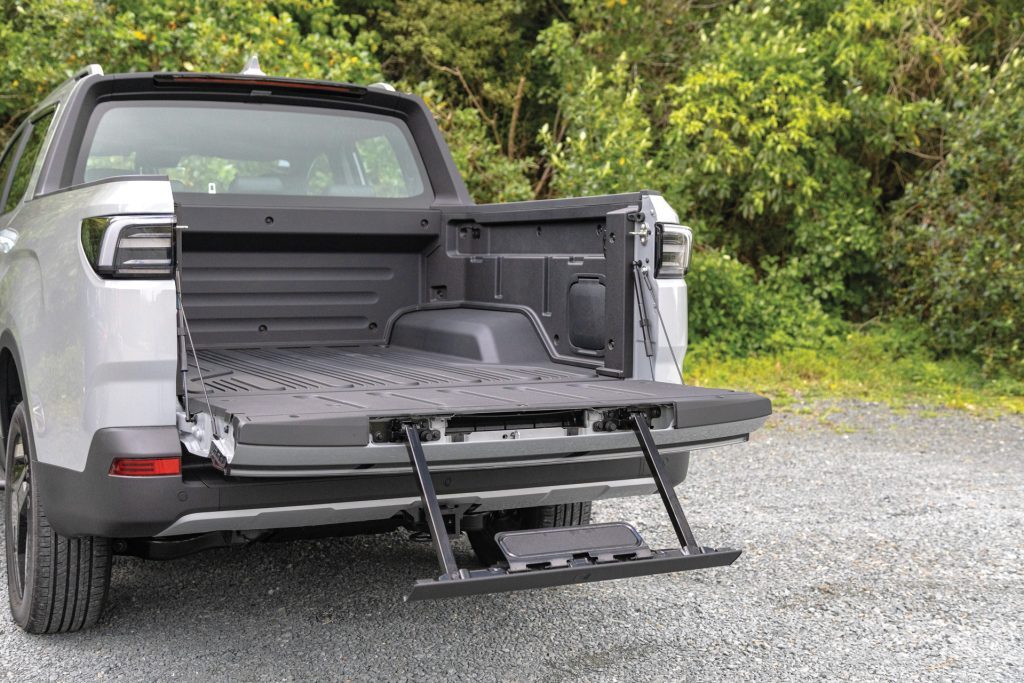
A tray that earns its keep
The deck holds 1194 litres and measures 1525 × 1450 mm between the walls, so pallets fit easily. The tailgate is soft-damped and conceals a pull-out step, a clever touch that makes climbing aboard easier (though it was initially jammed on our test unit). There’s also a weather-sealed Vehicle-to-Load power panel with four 240V / 16A sockets plus two 12V ports, allowing tradies to run tools or campers to plug in fridges, lights, even an espresso machine. With up to 6kW of output, few rivals match that level of onboard power.
If there’s a miss, it’s the tie-downs, only four and mounted high, but that’s easily remedied with dealer-fit rails. Towing capacity is 3000kg braked, payload a healthy 1030kg – though with tow bars yet to arrive, we will have to wait for a future story to put either to the test.
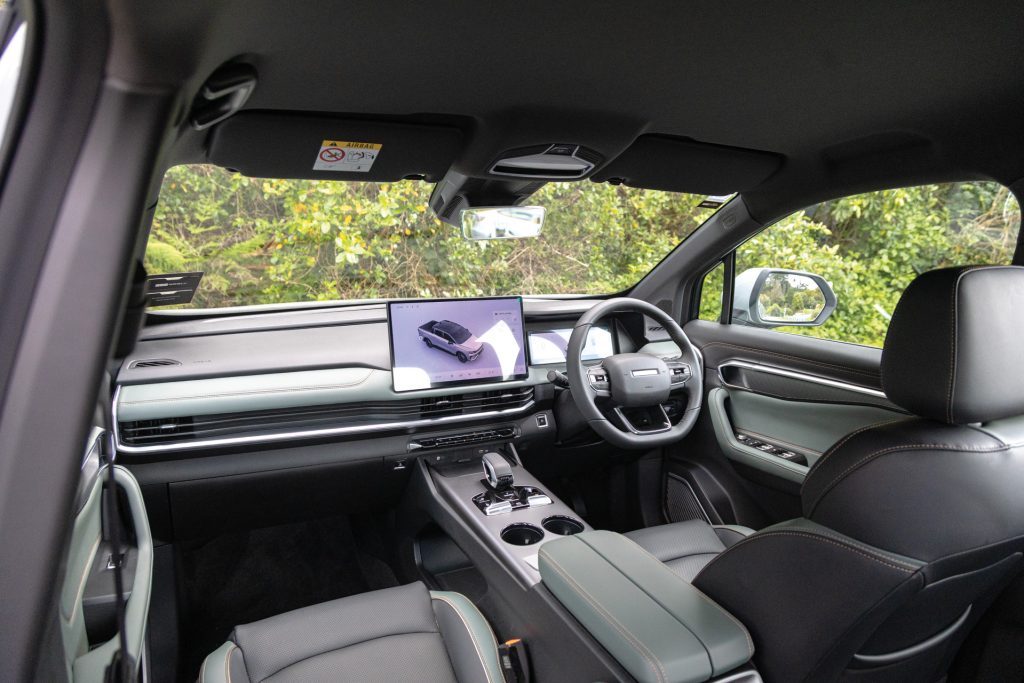
Car inside, ute outside
Slide into the cabin and you’ll swear you’re in a modern SUV. Soft-touch dash materials, a 14.6-inch central touchscreen, 10.2-inch digital cluster, and generous storage make it feel properly premium, though I have some concerns over how all this soft touch trim will stand up to a worksite. Ventilated and heated seats front and rear come standard, as does dual-zone climate control with a heat pump and CN95 air filtering. A 50-watt wireless charger and multiple USB-C ports keep devices humming. Physical buttons remain for key climate functions, thankfully spared from deep screen menus.
Rear-seat space is outstanding. Because there’s no separate chassis eating into the floor height, legroom rivals a Hilux or Ranger crew cab while the cushion sits higher for better thigh support. Hidden bins under the seat base add another 48 litres of stowage. Two ISOFIX points are fitted, though only two top tethers mean you can’t secure three child seats. A dedicated camping mode keeps air con and power running overnight without draining systems. It will even close the windows automatically when rain is detected, a tiny but telling sign of its tech depth.
No ute drives like this
Twin permanent-magnet motors send 315kW and 595Nm to all four wheels. Geely claims 0–100km/h in 4.5 seconds, and while we think that is a push it is still brutally quick for its type. Launches are instant, without lag or noise. Torque hits like a freight train, yet the ride remains refined thanks to independent multi-link rear suspension and coil springs instead of leafs. On twisty roads the Riddara corners flat and composed, more crossover than commercial. No ute we’ve driven rides this cleanly.
Geely tunes seven drive modes: Eco, Comfort, Sport, Sand, Mud, Off-Road, and Wading. These adjust throttle maps, traction and regen levels. In Eco, it drops to rear-drive to save energy, yet still feels brisk. Sport awakens both motors for maximum attack, while Wading mode disables the HVAC and seals the vents so it can splash through water up to 815mm deep.
Out on country roads it feels nothing like a truck. The steering is accurate, body control tight, and brake pedal natural despite regeneration. Only the occasional thud over coarse bumps reminds you there’s a tray out back. Geely’s Scandinavian chassis team clearly earned its keep. Driving around town, the Riddara’s instant torque and single-speed smoothness make it a joy. One-pedal driving is available via three regen levels. Visibility is good, turning circle tight thanks to electric steering and NVH levels low. There’s no diesel rattle, no gearshifts, just a faint whine as it spools up. At 2205kg it’s around 400kg lighter than a Shark PHEV, which helps efficiency and ride.
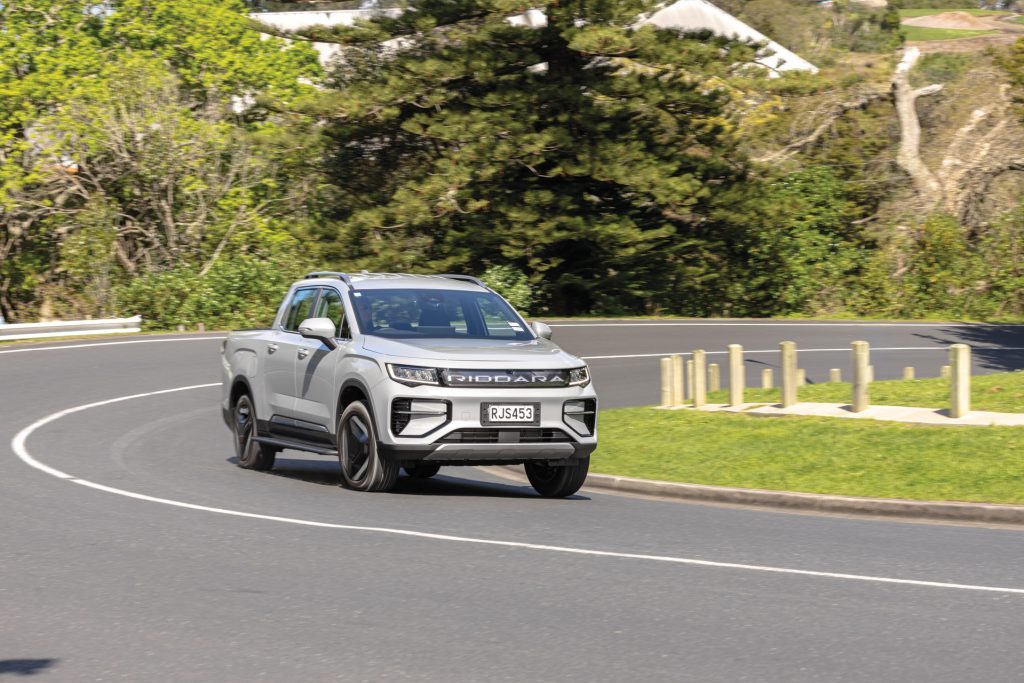
Range and efficiency
The 73kWh LFP battery is rated at 424km (NEDC) or around 360km WLTP in local trim. Real-world driving saw energy use hovering around 30kWh/100 km, giving roughly 250km between charges when driven enthusiastically, though round town it should get closer to target. Expect less if you’re towing a boat, physics doesn’t bend for batteries, but for city tradies or regional fleets doing 100–150km a day, it’s plenty.
Charging is straightforward: 11kW AC at home means a full overnight fill; 110kW DC on the road takes the pack from 30 to 80 per cent in about 30 minutes.
Off-road ability
Despite its monocoque chassis, the Riddara handles mild off-road work with ease. Hill-descent control and clever traction software keep things composed, while 225mm of ground clearance and an adjustable regen setting make downhill creeping simple. During launch testing it tackled river crossings, mud, and steep tracks on road tyres without drama. And yes, it can tank turn, though unlike others, it mostly locks the rear wheels and drags itself around by the front axle rather than a genuine skid steer. Handy but not pretty.
Without live or locking axles, this isn’t the machine for hardcore rock hopping like a Ranger Raptor, but it will take you along the beach and back without spinning a wheel.
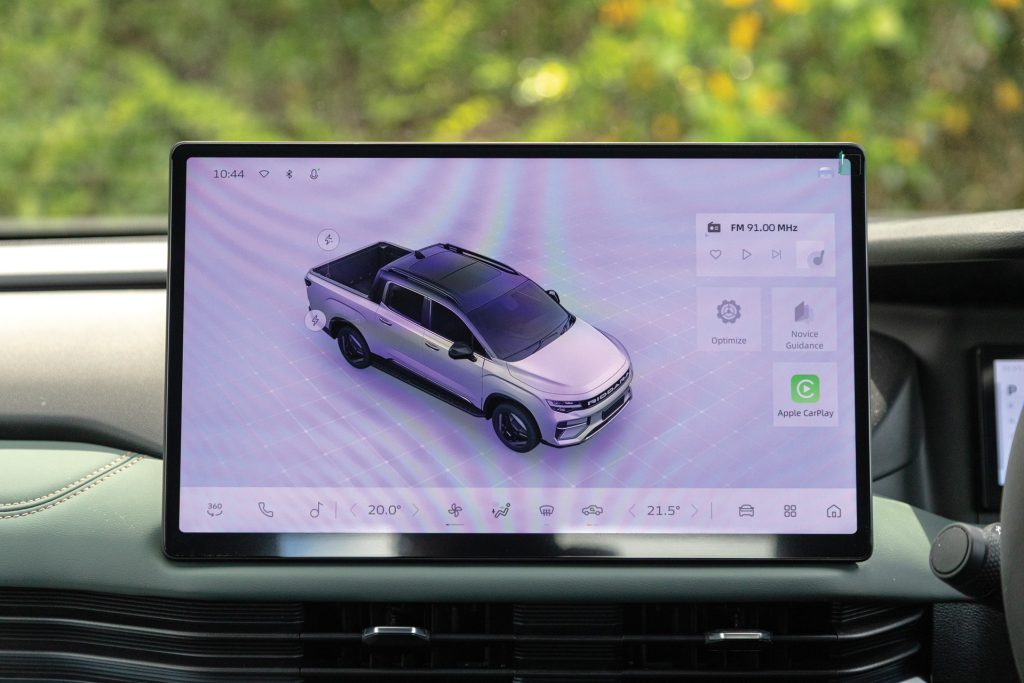
Safety and tech
Safety kit is comprehensive: six airbags, ESC, AEB, blind-spot monitoring, lane-keeping assist, adaptive cruise, rear cross-traffic brake, and even door-opening warning for passing cyclists. It is all reasonably sorted but we would like to see a little more local tuning done particularly for lane control and identification. A 540-degree camera system with “transparent chassis” view makes parking easy despite the size. Voice control works but still struggles with Kiwi accents, expect software updates.
Rivals and context
At $69,990 plus on-roads, the Riddara sits squarely against BYD’s Shark 6 PHEV ($69k), GWM’s Cannon Alpha PHEV ($64,990), and mid-spec Ranger PHEV variants around $70k. The difference? Those still burn petrol. The Geely is pure EV, with zero tailpipe emissions, no engine oil, and eligible for the last of the EV incentive company write-offs.
Against that crowd, the Riddara’s performance and refinement stand out. It won’t match the Ranger’s range when hauling a trailer to Taupō, but for urban fleets or tradies keen to cut fuel bills and emissions, it’s the first genuinely viable electric option. A plug-in hybrid variant using Geely’s Thor EM-P drivetrain, a 1.5-litre turbo triple plus dual-motor AWD, is already confirmed for NZ launch in 2026, promising petrol-backup range for those still nervous about charging. Geely offers a 100kWh NMC battery in some markets, boosting range significantly but with a price and payload penalty. We think Geely should consider bringing it here.
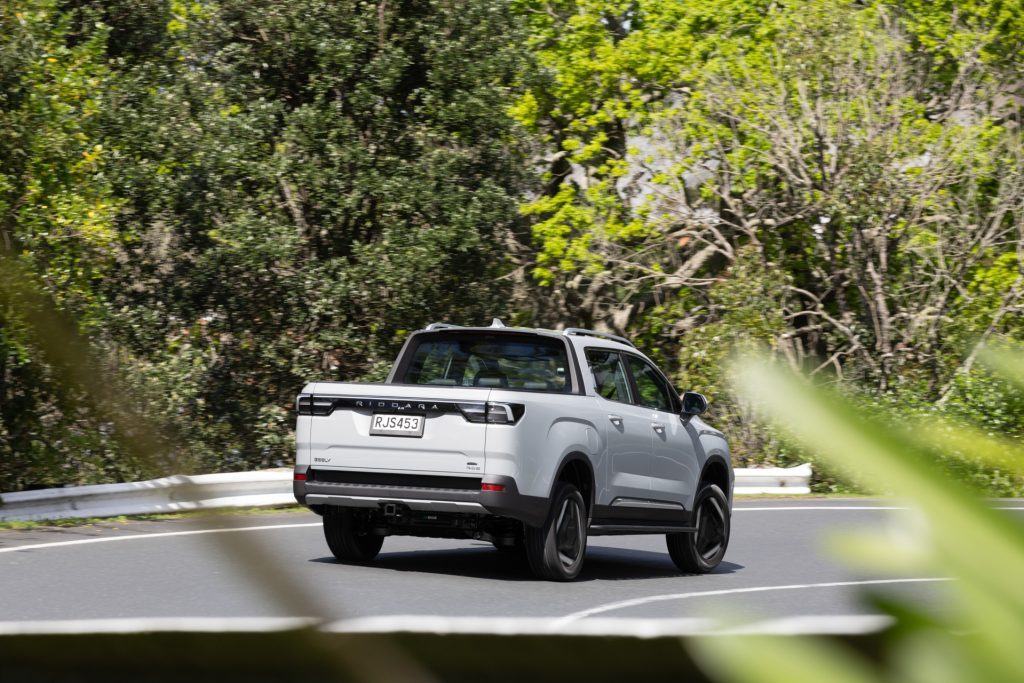
Ownership and warranty
Geely NZ backs the RD6 with a seven-year unlimited-kilometre vehicle warranty and eight-year battery coverage, plus roadside assist for up to seven years when serviced at dealers. Early buyers also receive three years’ free servicing and a credit of 15,000km in RUCs, a nice sweetener for the pioneers.
Verdict: the real deal
The Riddara RD6 Pro is a fully realised, well-sorted ute that just happens to run on electricity. It tows three tonnes, carries a tonne, wades deeper than a Hilux, and outruns the competition to 100km/h. It’s also the quietest, smoothest, and most comfortable ute we’ve driven. Range and charging infrastructure remain the only real limitations, but for day-to-day New Zealand use, it already fits the bill.
Those wanting a clean, clever, and quick workhorse will find this Geely not just a novelty but a genuine alternative. The Riddara proves that an electric ute can work, and that it can be better.
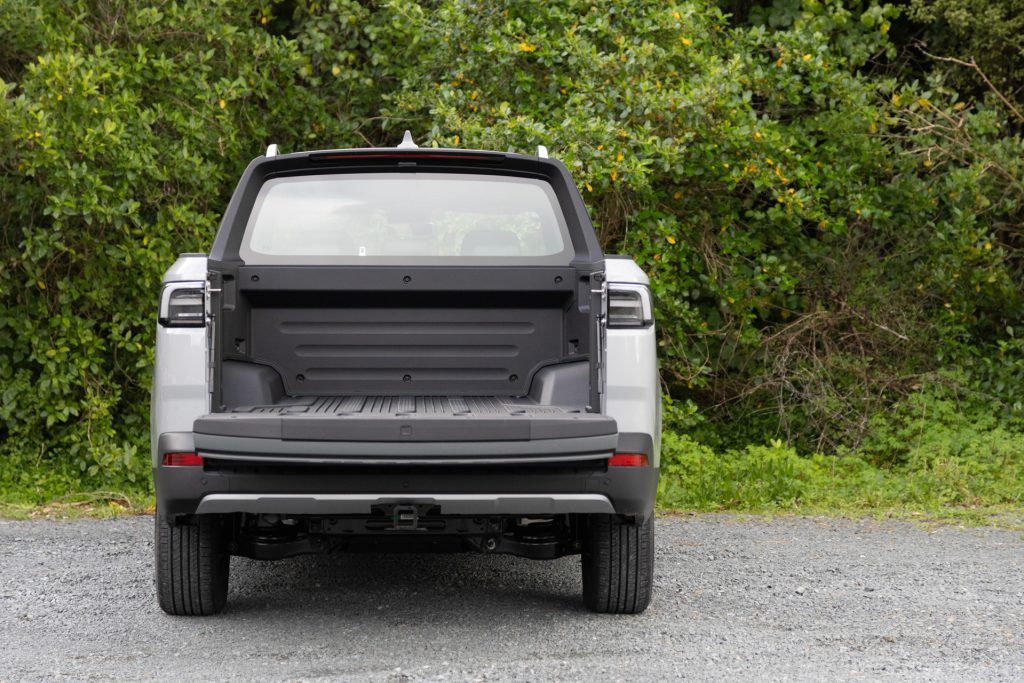
Geely Riddara RD6
$69,900 / 20.5kWh/100km / 0g/km
0-100 km/h 4.88s
80-120 km/h 3.34s (95.27m)
100-0 km/h 37.86m
Speedo error 97 at an indicated 100km/h
Ambient cabin noise 69.2dB@100km/h
Motor output 315kW
Max torque 595Nm
Battery 73.0kWh
Range 360km
Drivetrain Single-speed auto / AWD
Front suspension Mac strut / swaybar
Rear suspension Multilink / swaybar
Turning circle 12.2m (3.0 turns)
Front brakes Ventilated discs
Rear brakes Ventilated discs
Stability systems ABS, ESP
Safety AEB, ACC, BSM, LDW, RCTA, ALK, AHB
Tyre size f/r-235/60R18
Wheelbase 3120mm
L/W/H 5260 / 1900 / 1880mm
Track f-1600mm r-1620mm
Luggage capacity f-70L
Tow rating 750kg (3000kg Braked)
Service intervals 2yrs/30,000km
Scheduled servicing 3yrs / 60,000km
Warranty 7yrs / unlimited km
ANCAP rating Not yet rated
Weight (claimed) 2160kg
